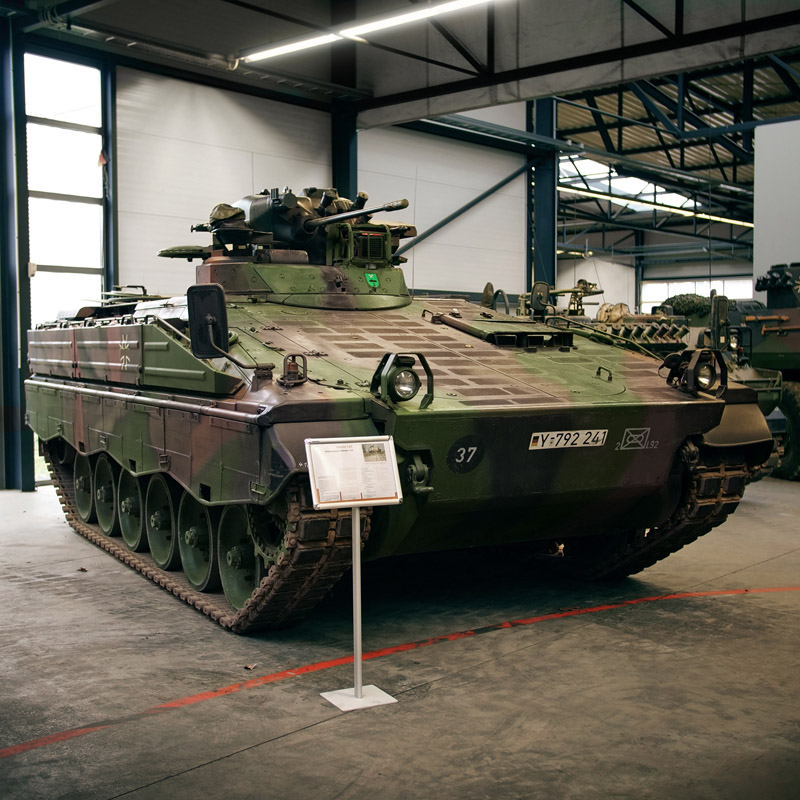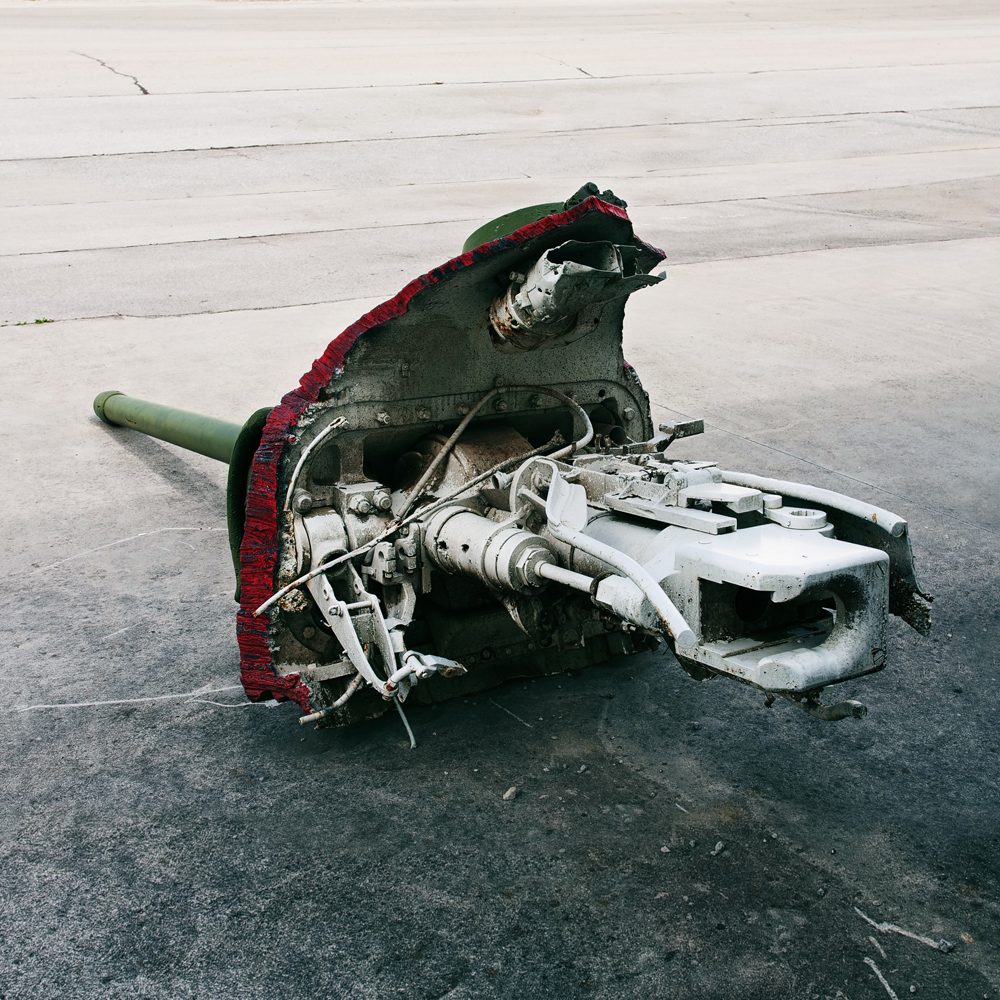Type: Infantry Fighting Vehicle
Nation: Germany
Period: Cold War
Location: Deutsches Panzermuseum Munster, Germany

Armoured battle taxi
The Marder was developed in the 1960s as a replacement for the Bundeswehr‘s scandal-ridden Schützenpanzer (lang) HS 30. Being the first German-designed infantry fighting vehicle after World War 2, it could carry a troop of six Panzergrenadiere (= mechanised infantry) into battle and enable them to keep up with the fast Leopard tanks. In this regard the 28-ton Marder was the spiritual successor to wartime half-tracks such as the Sd.Kfz. 251. In 1999, 28 years after the first Marders had been put into service, they were first deployed as part of the KFOR peacekeeping troops in Kosovo – a historic moment since this marked the Bundeswehr’s first foreign assignment.
Not easy to replace
When plans for a successor began to emerge in the mid-1980s, the Marder was officially redesignated as „Marder 1“. But since the Marder 2 would have been too expensive, it never got past the prototype stage. However, the original Marder would continue to be called „Marder 1“ for some reason. It would take the Bundeswehr until 2015 to finally field a replacement for the ageing IFV: The brand-new Schützenpanzer Puma. In the summer of 2022 some of the decommissioned German Marders were overhauled to be shipped to Ukraine for the defence against the Russian invasion – along with other western armoured vehicles such as the Flakpanzer Gepard, Panzerhaubitze 2000 and the MLRS rocket launcher.
Most curious naming
This particular vehicle is a 35-ton A3 model. Its improved armour was designed to withstand 30 mm gunfire as could be expected from its Soviet counterpart BMP-2. The most distinctive feature of the A3 are the large stowage boxes on the hull sides. „Marder“ means „marten“. This name is quite interesting because apparently nobody had cared too much that there had already been a whole series of German World War 2 tank destroyers by that name: Marder I, Marder II and Marder III. Of course as with all other things, the Germans have a special word for this: „Geschichtsvergessenheit“ – forgetting about history.
